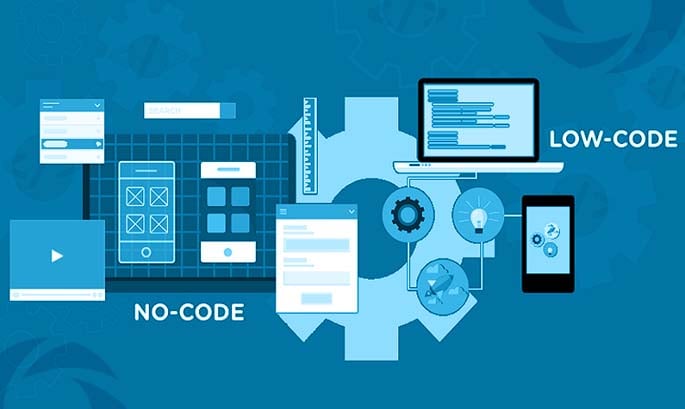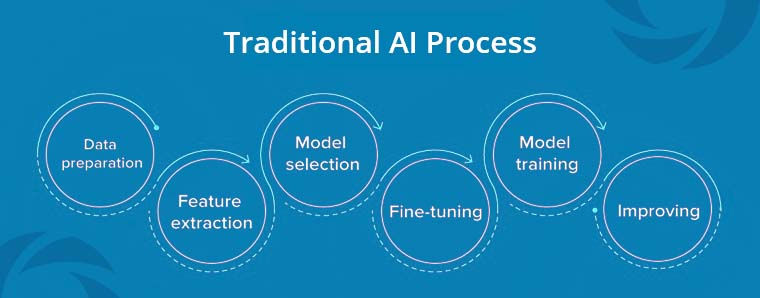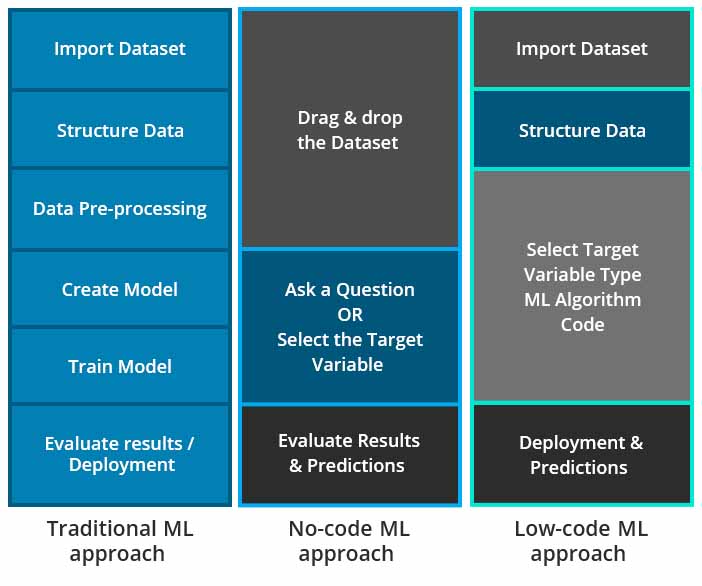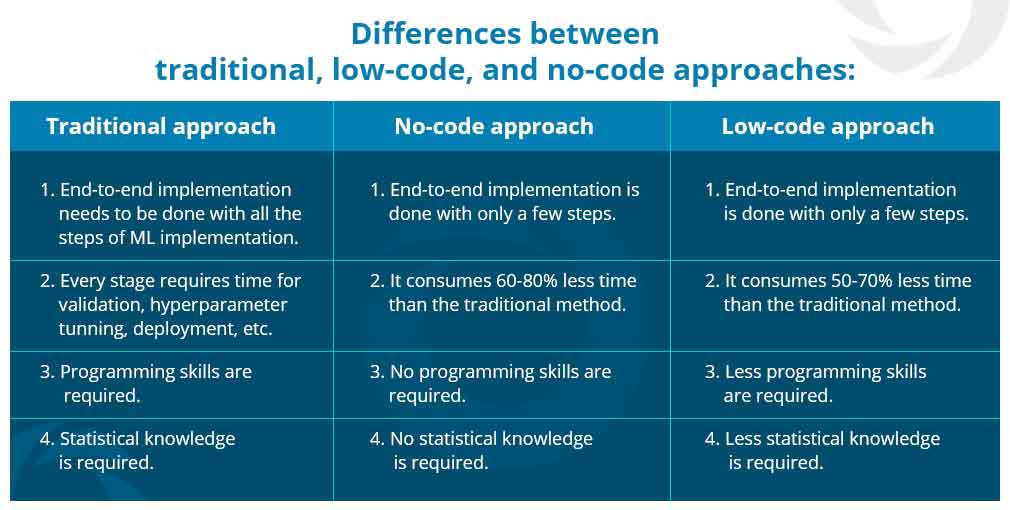Artificial intelligence | 13 Jul 2022 | 16 min
Will Low-code and No-code Platforms Take Over Traditional Machine Learning?

In today’s fast-paced world, computers play an important role in almost every industry. A machine can carry out instructions given to it. It becomes useless if no instructions are given to it. However, with the concept of Artificial Intelligence, machines are becoming intelligent enough to work on their own.
Machine learning has a wide range of applications in today’s world. It is becoming easier with the development of new technology and languages such as Python, but it still requires a more in-depth understanding of statistics and programming. With the introduction of no-code/low-code ML, it is simple to create a model without prior knowledge of programming or statistics.

In my blog today, I’m going to describe the traditional ML approach, its challenges, how the low-code / no-code ML approach eases them, how companies can benefit, popular platforms, and more!
Machine learning is a technique for teaching a machine to predict future outcomes. In the traditional machine learning approach, a model must be trained using the most appropriate algorithm on the type of data. In today’s world, the data generated is not in the most appropriate structure or data to train the model, so before applying any algorithm to the data, it is necessary to arrange the data in the most appropriate manner.
The traditional approach will involve stages as shown below:

To overcome this challenge, no-code and low-code platforms were introduced.
No-code ML is the process of developing a model with minimal programming and statistics knowledge. It is an AI-based algorithm that is used for coding and accuracy calculation.
As illustrated in the figure below, creating a model in the no-code ML platform becomes far too simple. It is an Artificial-Intelligence-based algorithm that chooses the best machine learning algorithm to apply to the model. A user has to just drag and drop the dataset and set the target variable in any no-code ML platform. The model will learn on its own. The user will then get its output, Evaluation result and Ready User Interface.
On the other hand, low-code involves a little coding work. This type of platform can also speed up the delivery of programmers, but it may necessitate some coding work. Even experienced programmers frequently use these tools to avoid creating unnecessary code which will save time and will achieve a result-oriented output.
As illustrated in the figure below, creating a model in the low-code ML platform has become so far simpler. It needs to import the dataset, structure the data, and then choose any desired low-code platform according to the type of target variable which on result, will output metric reports and validation score.

Allow me to give you a glimpse of how the traditional approach, low-code approach and no-code approach are different.

Now you can imagine how companies stand to gain from the use of low-code and no-code. Let’s dwell on the ‘how’ question…
Companies will benefit from high operating speed to create applications for smooth functionality across multiple devices i.e., data collection, data manipulation, modeling, and deployment. Since it builds more apps with less time, time compatibility is no more a barrier to innovations.
A transformation is required in today’s digital world. Low-code development simplifies the process of creating great, modern business apps. What’s more, less complexity means less turbulence.
With these low-code advantages, companies are better positioned to adapt and respond to rapidly changing business conditions.
According to NASSCOM (National Association of Software and Services Companies), companies have seen a 30-35% increase in ROI (Return on Investment) while using low code/no code platforms, up to a 75% reduction in development time, and a 65% reduction in costs.

Now let’s turn our focus to some popular low-code and no-code AI platforms!
I hope my blog has given you a good idea of how low code / no code platforms will ease the work dependency on programming support and will provide a desired output for non-tech experts in machine learning. ML model deployment for high load and data-intensive projects is solely substituted by this platform. But this will not replace the traditional ML process as this field has huge diversity and it will continue to update in the upcoming time.
Statistics specialists who are not experts in programming and programmers who are not statisticians are experiencing ease in their AI work due to low-code/no-code platforms. Also, a no-code/low-code ML platform provides result-oriented output within a very less stipulated time.
Send us an email to share your views about this blog and visit us at Nitor Infotech to learn about how we use leading-edge technology to fortify the IT ecosystems of companies. On a related note, you can also check out this blog if you’d like to know about Machine Learning as a Service.
Our recent webinar on ‘Low-Code and Beyond: Exploring the Future of Application Development and Your Career’ had our technology experts talk about how Low Code plays a compelling role in deploying responsive web applications and its future as a career path.
This webinar highlighted how:
Happy learning!

we'll keep you in the loop with everything that's trending in the tech world.
